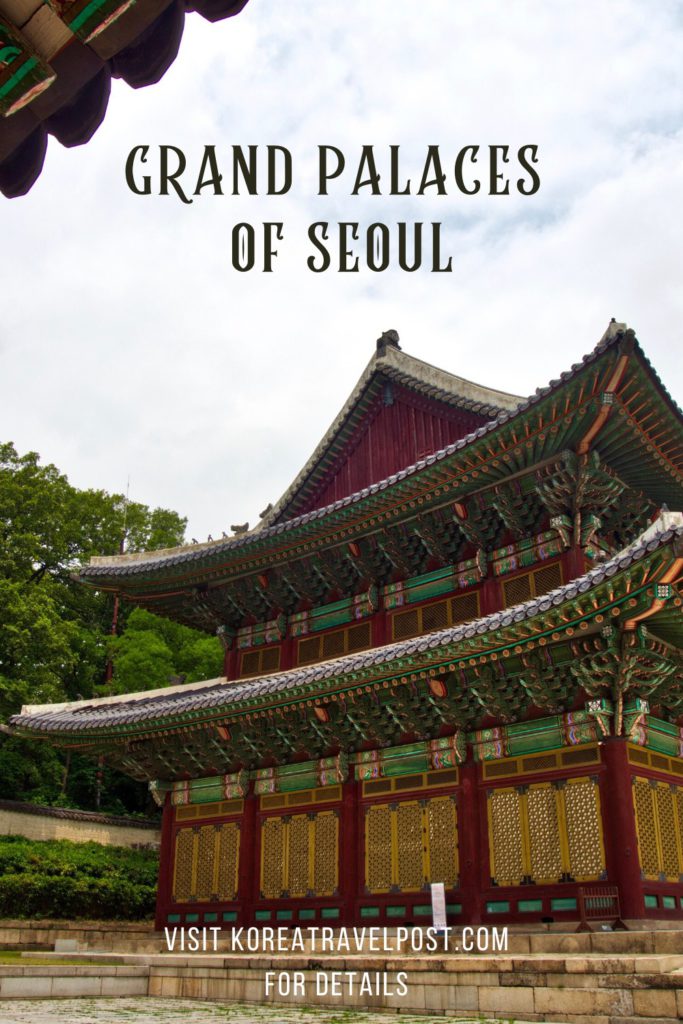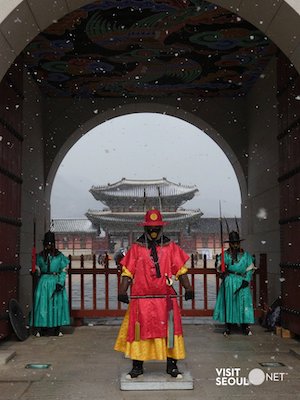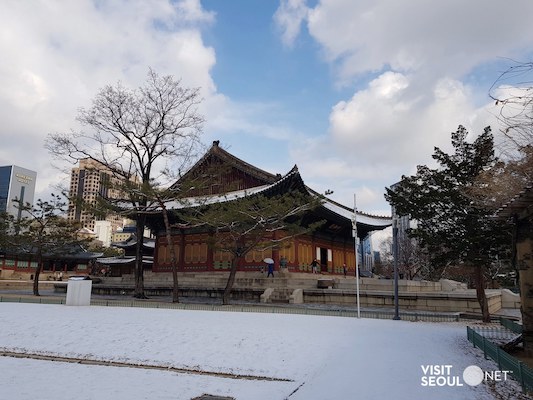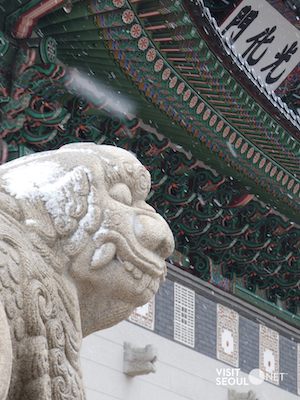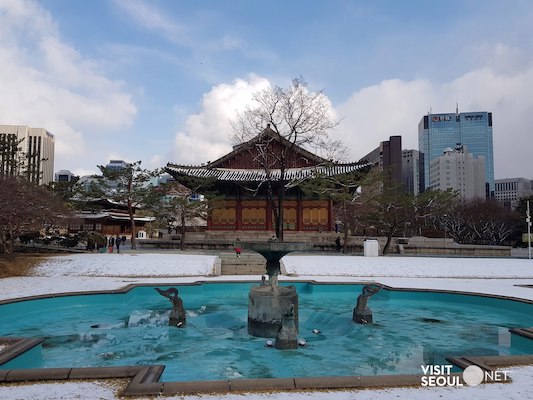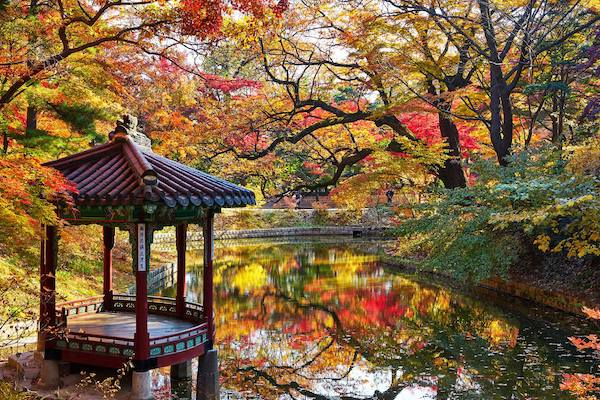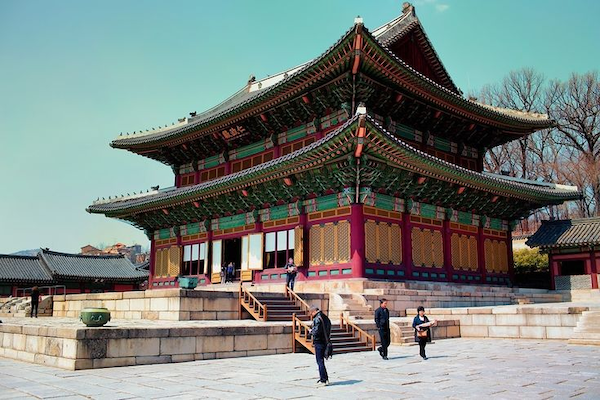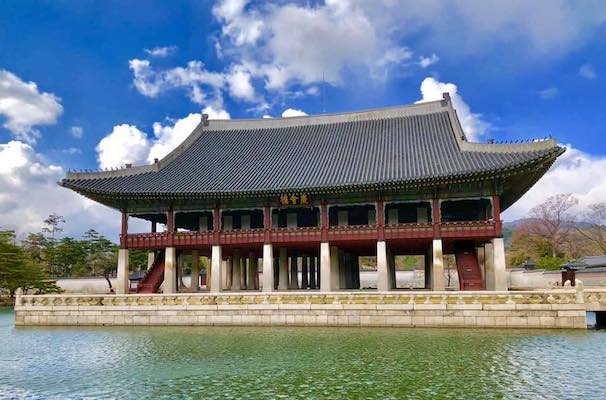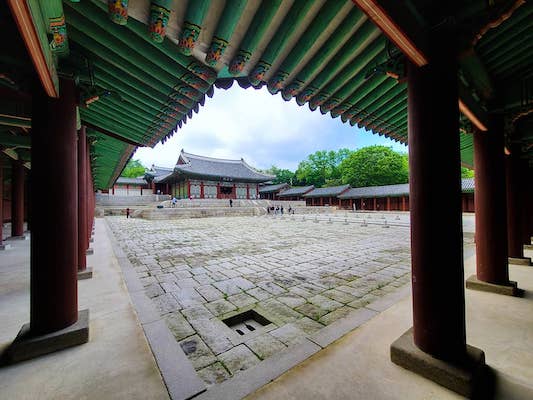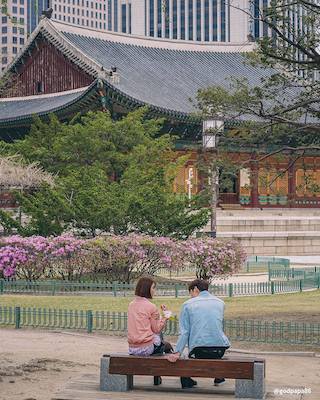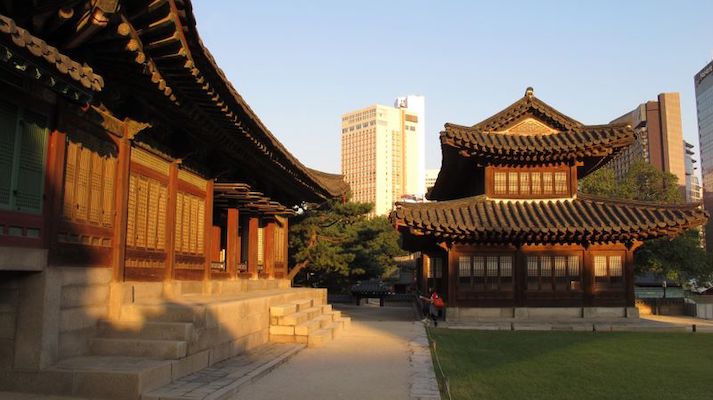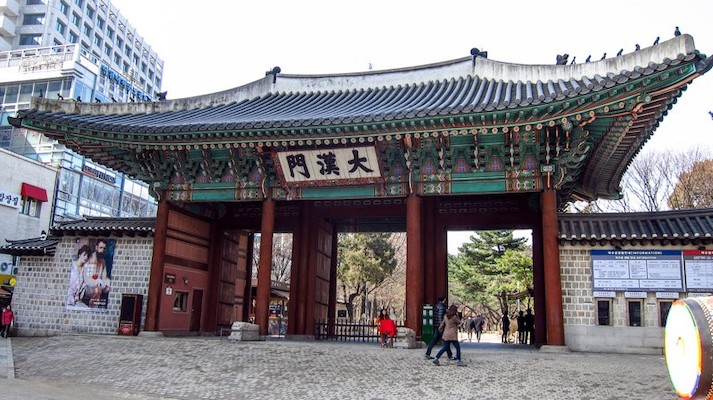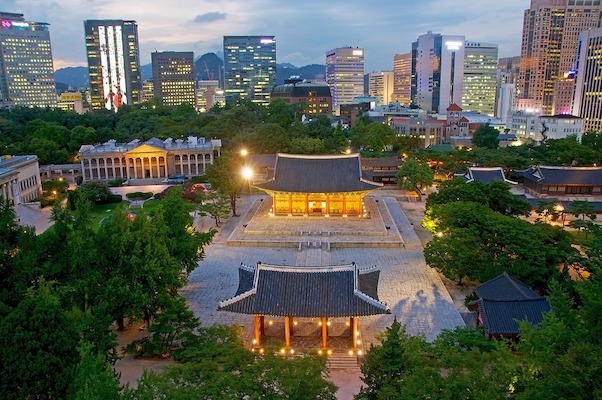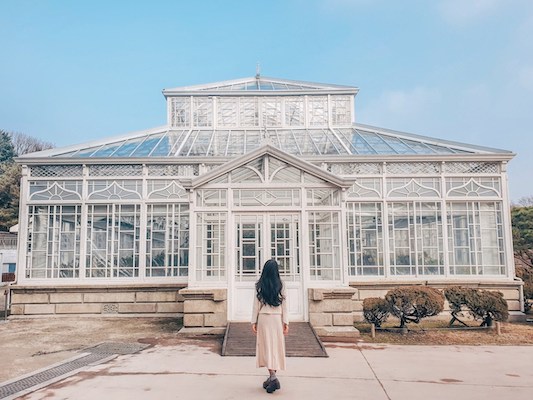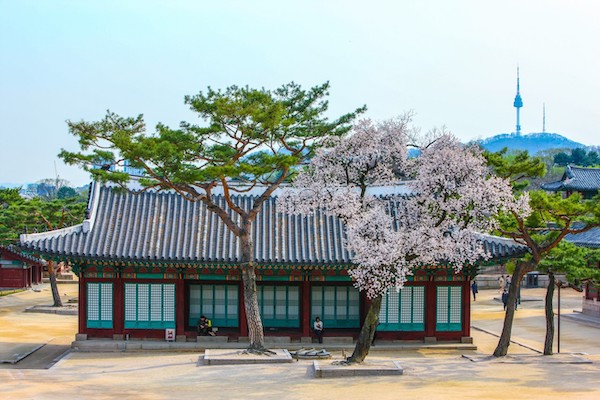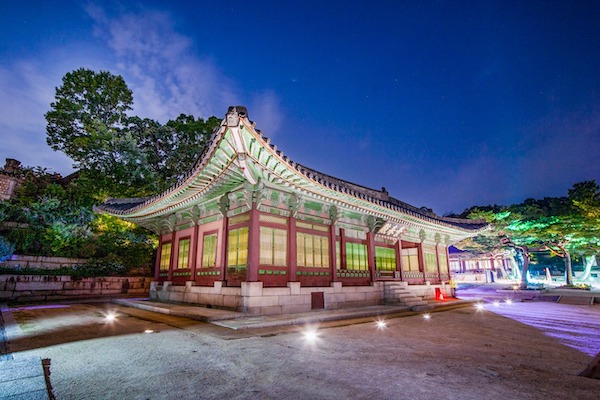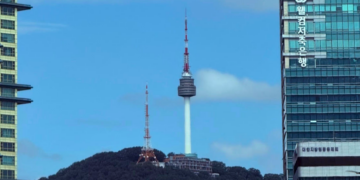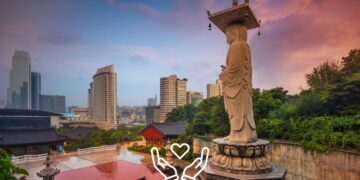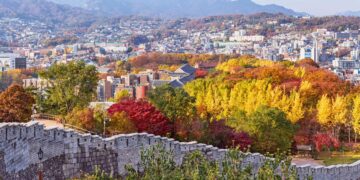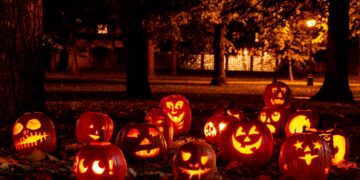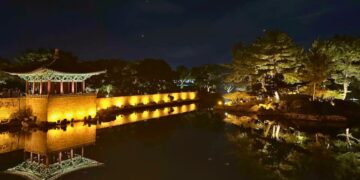Last Updated on 4 years by admin
The five grand palaces of Seoul are must-see sites in Korea that will add on to your royal South Korean experience!
The unmatched amalgamation of traditional and modern makes South Korea a must-visit in every wanderlust’s travel journal. There’s no other place in the world with such majestic royal sites right next to urban skyscrapers!
Although South Korea has developed and modernized at an enormous pace, the ancient temples and palaces are still maintained in excellent condition. Seoul boasts of new skyscrapers but it is also home to the country’s five grand palaces.
A trip to Seoul is not just about shopping, Instagram-worthy cafés, modern architecture, and getting swept up in the Hallyu wave. The city offers a delicate balance between modernity and the rich history of Korea with its 5 grand palaces of Seoul.
Visiting all the 5 grand palaces is Seoul might be an overkill but you should at least visit two of them to see the grandeur of Korean emperors and enjoy the magnificent Korean history.
But, then the question comes down to which one should you choose? Read on below to find out more about all the 5 grand palaces of Seoul and then you can make a decision!
Here’s a little bit about the five grand palaces in a nut shell:
- Gyeongbokgung Palace – The most impressive and magnificent of all the 5 palaces is Seoul. It is also historically most important.
- Changdeokgung & Changgyeonggung Palaces (The East Palaces) – Best surrounding gardens and beautifully reconstructed old buildings.
- Deoksugung & Gyeonghuigung Palaces – Smaller palaces as compared to others. They fit into any travel itinerary especially if you are short on time.
Royals of South Korea
The last kingdom to rule in Korea was the Joseon Dynasty (조선왕조), which lasted from 1392 until 1910. Much of modern Korea is shaped by the legacy of the Joseon Dynasty dominion in the peninsula.
During 500 years of their rule, Joseon Dynasty rulers constructed the five Seoul palaces, and all five are still standing. These five Seoul palaces are probably the best places to see and experience the history, tradition, culture, and beauty of Korea all in one place.
All the five grand palaces are clustered around the Seoul City Hall and the general business district. These five Seoul palaces include Gyeongbokgung Palace, Gyeonghuigung Palace, Deoksugung Palace, Changgyeonggung Palace, and Changdeokgung Palace.
For those looking to explore the history and culture of Seoul, a tour of the Five Grand Palaces may be an excellent way to spend a couple of days.
Here’s all you need to know about the five Seoul palaces that you must visit for a royal South Korean travel experience.
Gyeongbokgung Palace (경복궁)
The most impressive and expansive of the 5 Grand Seoul palaces, Gyeongbokgung Palace, was the first and the main royal palace of the Joseon dynasty.
Built-in 1395, Gyeongbokgung Palace is additionally commonly mentioned as the Northern Palace. Its because its location is that the furthest north in comparison to the neighboring palaces of Changdeokgung and Gyeonghuigung Palace.
Korea’s government has been restoring the buildings that were destroyed by the Japanese invaders since the 1990s. The glory of the beautiful Gyeonghoeru Pavilion, Hyangwonjeong Pond, and the huge gates of Gwanghwamun are what make Gyeongbokgung Palace the most glorious and grandest of all the five Seoul palaces.
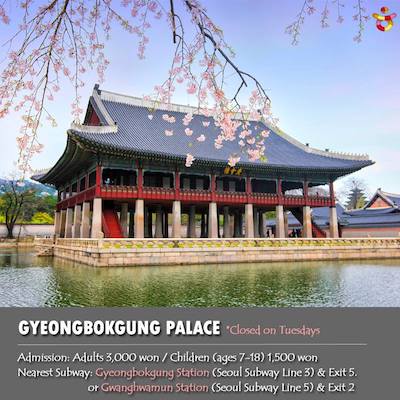
Gyeongbokgung Palace is one of the best attractions and a must-see palace for anyone visiting Seoul.
You can also check out the Bukchon Hanok Village near the palace.
Read more: Gyeongbokgung Palace – Korea’s Magnificent Main Palace
Changdeokgung Palace (창덕궁과 후원)
Changdeokgung Palace is also known as Donggwol, the Eastern Palace. This is because the palace is located on the east side of Gyeongbokgung Palace. For about 270 years, this Seoul palace was home to the Joseon dynasty government. It was preferred residential grounds for many Joseon Dynasty kings.
The buildings of Changdeokgung blend with the natural topography of the site instead of imposing themselves upon it making it a picturesque sight.
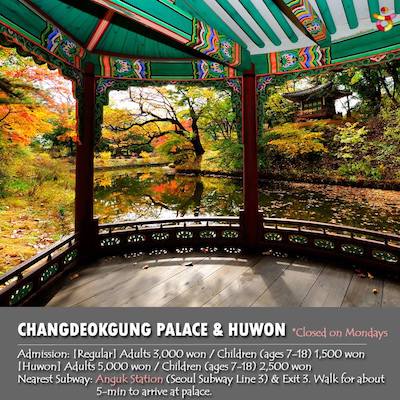
It, just like the other Five Grand Palaces in Seoul, was heavily damaged during the Japanese occupation of Korea (1910–1945). Currently, only about 30% of the pre-Japanese structures of the East Palace Complex (Changdeokgung alongside Changgyeonggung) survive.
Read more: Changdeokgung Palace (창덕궁) and Huwon, The Secret Garden
Gyeonghuigung Palace (경희궁)
Gyeonghuigung is the youngest of the Seoul palaces, having been first built as a secondary palace. It was constructed within the 1600s after the Japanese invasions, which wrecked the opposite original palaces. Gyeonghuigung Palace is now one of the smallest palace complexes in Seoul, also known as Seogwol, meaning “a palace of the west.”
The Japanese dismantled what remained of the palace during their occupation of Korea. Instead of the Korean palace, a faculty for Japanese citizens was built on the location. The South Korean government reconstructed around 33% of the palace under the rebuilding of the ‘five grand palaces’ initiative.
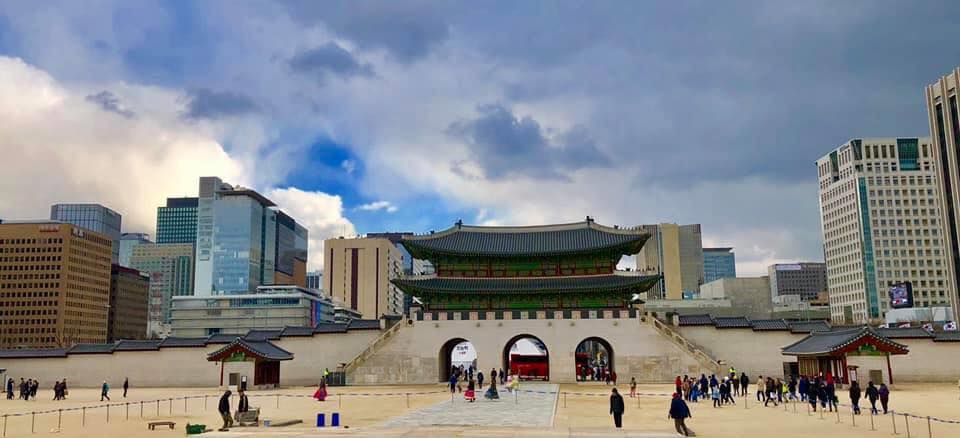
This Seoul palace sits beautifully on the lap of the surrounding mountain Iand. It holds proud traditional beauty in its design and is a significant part of Korea’s history.
Deoksugung Palace (덕수궁)
At Seoul’s most sedulous corner, lies the Deoksugung Palace. This Seoul Palace is a must-visit historical site while touring the magnificent city of Seoul.
Within the boundaries of this historical site, one will be fascinated to find the potpourri of contrasting architectural styles. It is world-famous for its beautifully carved stone-wall road and western-style inspired garden.
It is the only palace to feature a western-style garden, fountain, and a building. The name Deoksugung translates to ‘palace of virtuous longevity.’
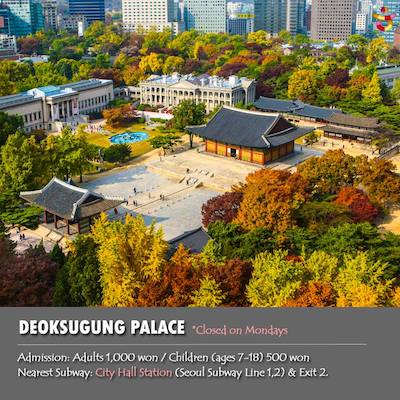
The other buildings with the enthralling mixture of two different types of architecture are the Jeonggwanheon pavilion and the Seokjojeon hall. While the palace encompasses a vast area with many buildings. The present palace grounds are just a little shadow of the former splendor, with only a few structures remaining.
Read more: Deoksugung Palace (덕수궁), Seoul
Changgyeonggung Palace (창경궁)
In the heart of this city lies the grand Changgyeonggung Palace built by the 4th ruler of the Joseon dynasty. This fifteenth-century Seoul palace was also known as “Donggwol” or the “East Palace” along with the Changdeokgung Palace.
At the entrance stands the mighty Honghwa Gate, past which you will find Okcheongyo Bridge. Cross Okcheongyo Bridge, pass the Myeongjeongmun Gate, surrounded by beautiful gardens you’ll find three courts, Myeongjeongjeon being the main hall, will show you the best of Joseon architectural style. The most prominent building in Changgyeonggung Palace, Tongmyeongjeon, was built for the queen.
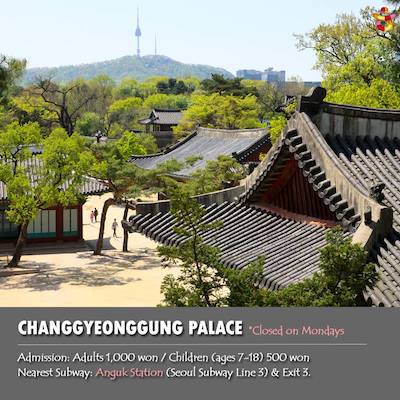
A lot of the original building of this Seoul palace was burnt in war and riots, but it is still a beautiful historical place.
Read more: Taegeukgi: The South Korean Flag – A Brief History
We hope you enjoy your trip to these five amazing grand Seoul palaces and feel free to share your South Korea travel story with us in the comments below. Happy traveling!
Love it?
Pin it and save it for later!
